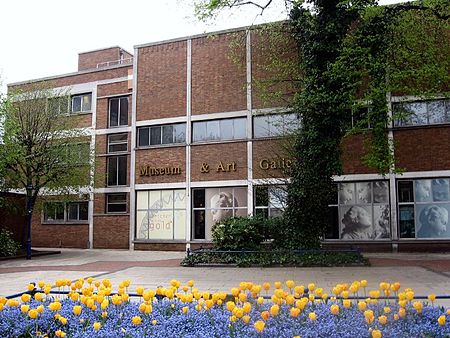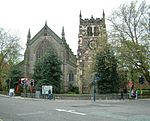Derby Museum and Art Gallery
1836 establishments in the United KingdomArt museums and galleries established in 1882Art museums and galleries in DerbyshireCeramics museums in the United KingdomDecorative arts museums in England ... and 5 more
Derby Museum and Art GalleryLocal museums in DerbyshireMilitary and war museums in EnglandMuseums in DerbyUse British English from August 2015

Derby Museum and Art Gallery is a museum and art gallery in Derby, England. It was established in 1879, along with Derby Central Library, in a new building designed by Richard Knill Freeman and given to Derby by Michael Thomas Bass. The collection includes a gallery displaying many paintings by Joseph Wright of Derby; there is also a large display of Royal Crown Derby and other porcelain from Derby and the surrounding area. Further displays include archaeology, natural history, geology, military collections and world cultures. The Art Gallery was opened in 1882.
Excerpt from the Wikipedia article Derby Museum and Art Gallery (License: CC BY-SA 3.0, Authors, Images).Derby Museum and Art Gallery
Wardwick, Derby Little Chester
Geographical coordinates (GPS) Address Phone number Nearby Places Show on map
Geographical coordinates (GPS)
| Latitude | Longitude |
|---|---|
| N 52.92225 ° | E -1.4795 ° |
Address
Bess of Hardwick
Wardwick 15
DE1 1HA Derby, Little Chester
England, United Kingdom
Open on Google Maps








